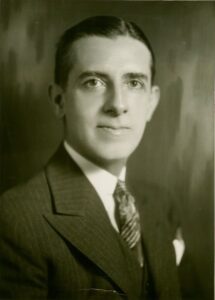Peru’s in Nashville because Nashville was in Peru
Peter Sebastian Chesney, 2023-2026 Collaborative Humanities Postdoctoral Fellow

Has anyone else noticed the ever so subtle hints of Peru peppering so many of Nashville’s most revered cultural institutions? This linkage caught my eye at the Nashville Zoo when I first noticed Expedition Peru: Trek of the Andean Bear. Besides several truly magnificent mammals endemic to Peru, including that titular megafauna, the exhibit also showcases design elements of the cultural region. Visitors who go to see a cute little deer and a muddle of Guinea pigs will also become “immersed in an authentic indigenous village with a Peruvian lodge.” https://www.nashvillezoo.org/our-blog/posts/expedition-peru
Several months later, Peru caught my ear while I was listening to a recording of Bel Canto, the 2001 novel by Nashville’s own Ann Patchett. An unnamed Latin American country is where this story is set, and it has a head of state with the Japanese surname Masuda. That reminded me and some of you too, I’ll go ahead and guess, of the recently departed President Fujimori. Once the narrative turned to a thrilling account of ambassadors taken hostage, much like the Lima Crisis of 1996-1997, I began to accept that there was something to this Peruvian Connection.
Online, I found the beginning of an answer to the question of a network drawing species, symbols, surnames, and stories from Peru into Nashville. Prentice Cooper, formerly governor of Tennessee during the last years of the Great Depression and World War Two, assumed the post of, wait for it!, U.S. ambassador to Peru in the late 1940s. His sons Jim and John have since served as elected officials, a long-standing Congressperson and the mayor of Nashville. The latter Cooper was running for a seat on city council that summer of 2015 when the zoo announced Expedition Peru.

To learn more, I needed to go into the archives, and Prentice Cooper’s records are stored at the Tennessee State Library. There I cycled through reams of microfilm, reading scans of letters from his ambassadorship, and found a richer lode of information than I had ever expected. In summer 1947, Cooper wrote a letter of introduction to the U.S. ambassador in Paris instructing him to play host to a father and daughter, George and Susan Train. They were Americans sailing for France from Peru and seeking a vacation from the hard work of running “the largest American industry in Peru, the Cerro de Pasco Copper Corporation.”
What did this company have to do with Cooper or Nashville? For that link, I had to return to the Internet, where I learned more about the cerro. The Inkas knew it. So did the Spanish. But only with applications of technologically advanced mining methods developed in the American West and the growing demand for copper during the Second Industrial Revolution did Cerro de Pasco reach its peak profitability. The syndicate that bought Montana’s Anaconda Mine in the early 1900s also bought Cerro de Pasco. At both, the operators switched from a focus on mining silver to copper. In Peru, this syndicate made the greatest capital investment of U.S. wealth in real estate outside the country up to that point in history. Those millions sunk into Latin America included a cool two million from the Vanderbilt family, twice what the founding of our university cost. They must have been in grief after patriarch Cornelius’s death the prior winter. This investment would return quite a dividend to the shareholders until as late as 1974 when the Republic of Peru finally nationalized the mine.
Prentice Cooper was no graduate of Vanderbilt University, but he did begin his studies here and pledged with Tennessee’s Alpha chapter of Phi Delta Theta. What he might have done later in life to promote or to protect the Vanderbilt family’s investment in Peru remains an open question, but our university is the third cultural thread weaving Peru into Nashville. On campus today, you can find an outstanding concentration of Andeanists. There are few institutions outside Peru where students will be better situated for a rigorous study of pre-Columbian Andean archaeology, a critical anthropology of peoples native to the cultural region, or the socio-political dynamics of those high-altitude cities. Thus local academics, alongside an acclaimed novelist and zoo curators, resonate with the echoes of a trade relationship that opened a very rich vein and poured the life blood of Peru into Nashville soon after the economically debilitating defeat of Tennessee’s slave society during the Civil War. https://as.vanderbilt.edu/clacx/areas-of-focus/andean-studies/
This is how Peru became a part of Nashville’s transnational hinterlands and, so visibly, a gem still on display in the city’s own figurative crown.

Peter Sebastian Chesney is a sensory historian of technology in the cities of the 20th-century United States. Using sensory studies, urbanism, and the history of technology, Chesney maps routes through the city that did not rely on sight. The ear, nose, tongue, and skin, lay foundations for alternative narratives to the dominant paradigm of L.A. as the self-declared “white spot” of cis-male, hetero, and able-bodied Anglo America. These stories animate Chesney’s book in progress, Drive Time: A Sensory History of the Car Cultures in 20th-Century L.A. He holds a PhD in History from UCLA.